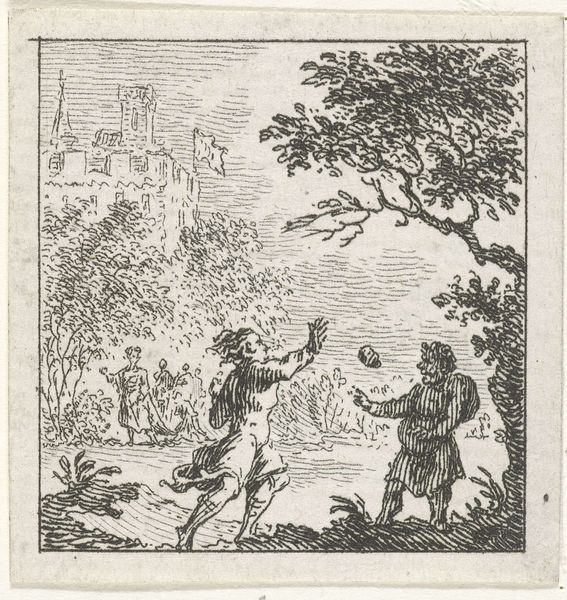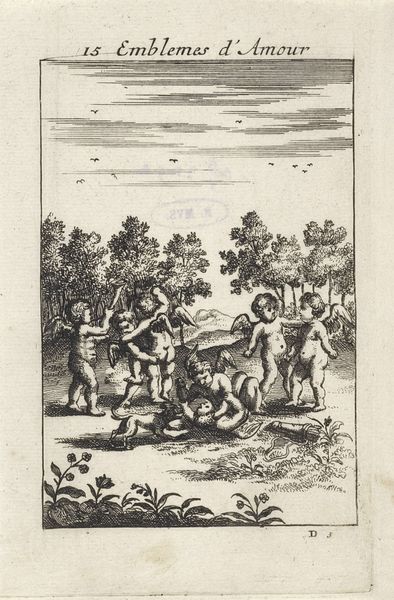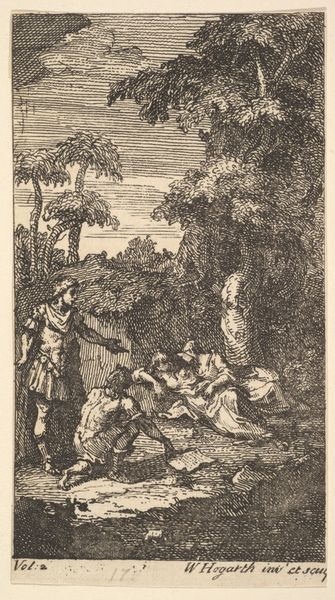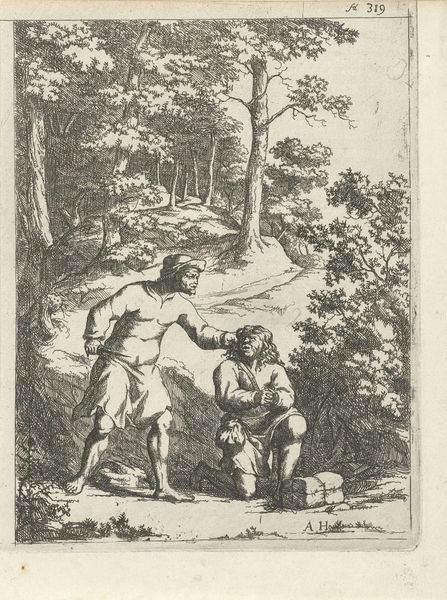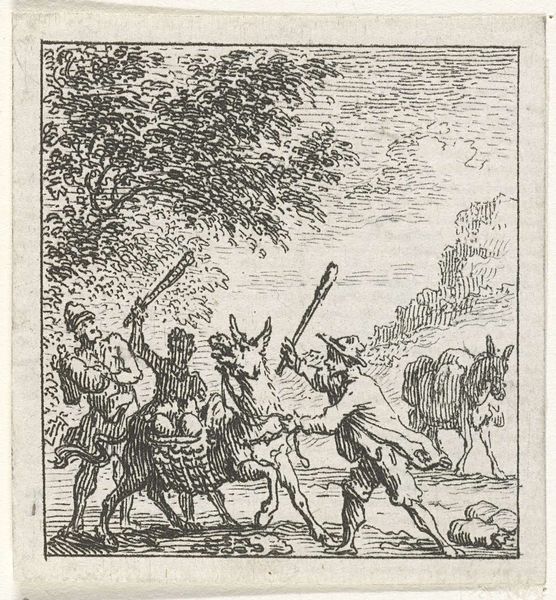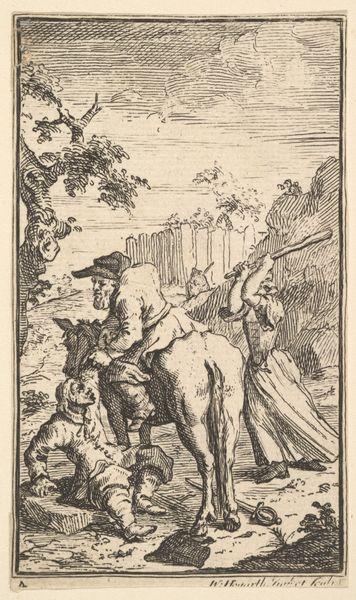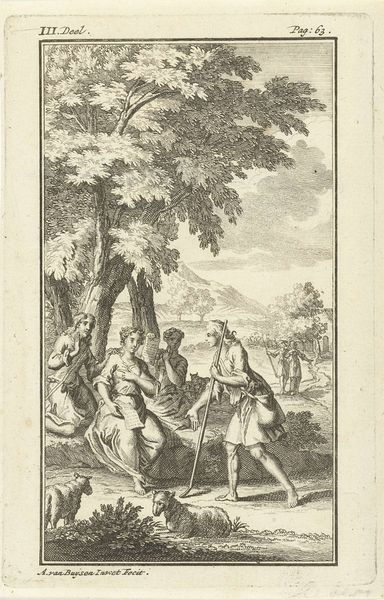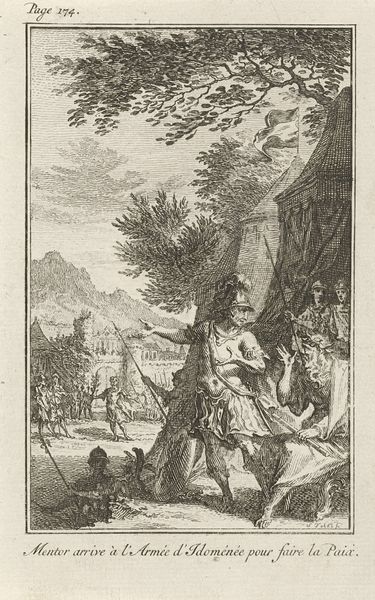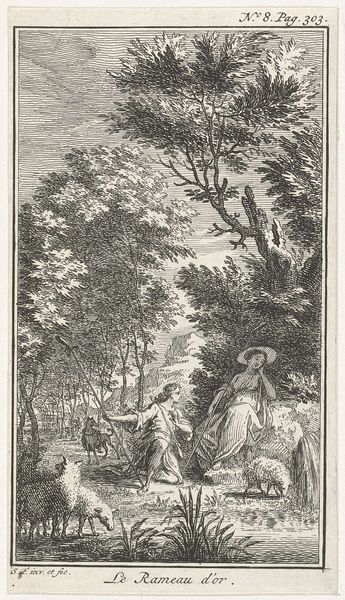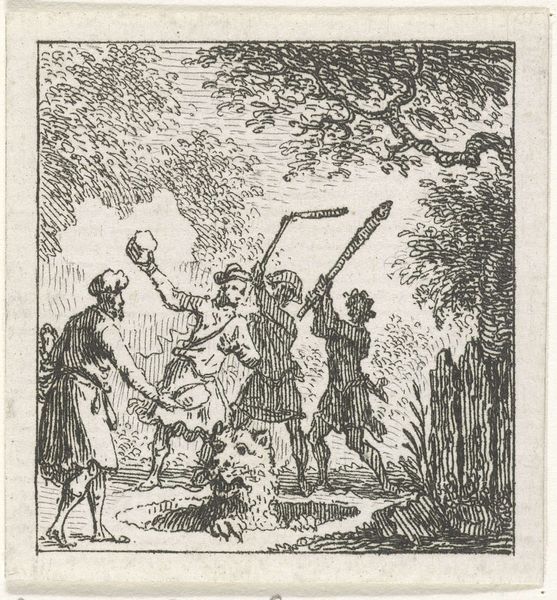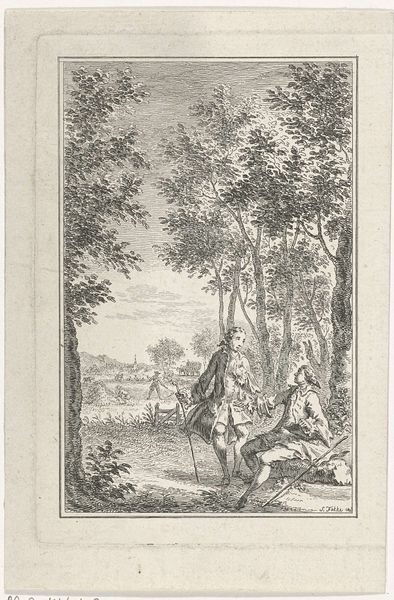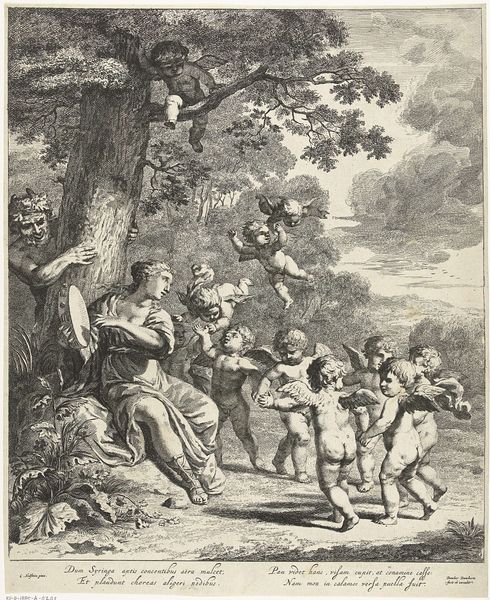
Dimensions: height 43 mm, width 41 mm
Copyright: Rijks Museum: Open Domain
This tiny print, “Fabel van de man en de hond,” was made by Simon Fokke sometime in the 18th century, using a technique called etching. Etching is an indirect process, unlike engraving, where the artist cuts directly into a metal plate. Here, the plate would have been coated with wax, the image scratched into the wax, and then acid used to bite the exposed metal. This creates delicate lines that hold ink. The process is especially good for creating multiple editions, and became increasingly important as print culture expanded. Looking at the image, you can see the characteristic fineness of the etched lines. It is through this medium that the fable unfolds, line by line. Ultimately, the importance of works like this is to remind us of the many hands, skills, and processes that go into making images. They are not just born but made, and their value lies not only in what they depict, but how they are created.
Comments
No comments
Be the first to comment and join the conversation on the ultimate creative platform.
